Today we celebrate one of my favorite Tex Avery MGM cartoons – Lucky Ducky (originally released October 9th, 1948). It was a duck hunting cartoon (Porky’s Duck Hunt) eleven years earlier which Avery begat Daffy Duck. The success of that hunting film led to another (by Ben Hardaway), Porky’s Hare Hunt, which begat Bugs Bunny. Here Avery returns to the tried-and-true duck hunt premise with a surplus of classic gags and situations at – what I think is – the height of his abilities. The result is one of his classics. Here’s a clip:
The version of the cartoon most known is the one that’s been in television distribution and home video circulation since its theatrical re-release on January 6th 1956. Because a vault fire in the 1970s destroyed the original negatives for MGM’s pre-1952 shorts – simply seeing the original versions of these films is gets harder and harder as the time go by. Nitrate prints of MGMs 30s and 40s cartoons, and original studio records, are all we historians have to go on – if we can find them.
Luckily, cartoon Researcher and fellow film collector Jim Tucker recently got his hands on a 35mm British Tech print of Tex Avery’s Lucky Ducky – and sent us the a report on it, with original titles posted below for comparison.
“It features an MGM ending I have personally never seen before. As you recall, the cartoon ends with 2-dogs sitting in a boat on a lake surrounded by hundreds of ducks all dancing in unison to a mambo beat. As the scene ends there is a very slow iris out while visually keeping time with the soundtrack. About when you think it’s all over, the MGM logo enters off screen from the right side and moves across the frame. As the logo is about to exit screen left, it suddenly snaps to the center still keeping time with the music. Avery’s gags are continued literally to the very end. Sadly this final topper is cut from reissue prints. The reissue prints iris out to static title cards. The music is there but the end cards are replaced.”
Click the thumbnails below to enlarge the original title frames from Tucker’s print of Lucky Ducky. Below that a few model sheets and the original “dialogue cutting continuity” documents filed for copyright purposes. Comparing documents like these agianst the versions of the films we have today allows us to know what (if any) changes were made for reissue.

(Thanks to Jim Tucker and David Gerstein)




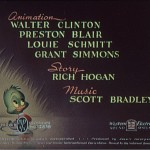
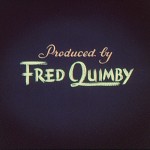



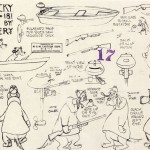
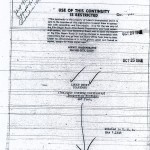


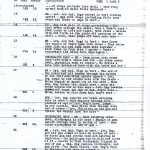







 Jerry Beck is a writer, animation producer, college professor and author of more than 15 books on animation history. He is a former studio exec with Nickelodeon Movies and Disney, and has written for The Hollywood Reporter and Variety. He has curated cartoons for DVD and blu-ray compilations and has lent his expertise to dozens of bonus documentaries and audio commentaries on such. Beck is currently on the faculty of Cal Arts in Valencia, UCLA in Westwood and Woodbury University in Burbank – teaching animation history. More about Jerry Beck [
Jerry Beck is a writer, animation producer, college professor and author of more than 15 books on animation history. He is a former studio exec with Nickelodeon Movies and Disney, and has written for The Hollywood Reporter and Variety. He has curated cartoons for DVD and blu-ray compilations and has lent his expertise to dozens of bonus documentaries and audio commentaries on such. Beck is currently on the faculty of Cal Arts in Valencia, UCLA in Westwood and Woodbury University in Burbank – teaching animation history. More about Jerry Beck [



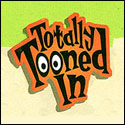



GREAT find Jim! This is why Warner Bros. needs to sub-license these cartoons out instead of just sitting on them and not releasing them on home video. I’d pay good money to get my hands on a Steve Stanchfield-supervised transfer of this print, even unrestored, just to see this cartoon not only with original titles but in real Technicolor instead of from an Eastmancolor element. Thanks for posting this, Jerry!
I’ve read a couple times that before the late 1960s or 1970s (i.e. when the amount of prints being made got much larger), release prints were usually printed from the original camera negative, not an internegative/dupe negative. Warner Bros. and Disney spliced reissue titles for their cartoons into the camera negatives. What evidence is there that MGM did otherwise?
CN now shows some Tex Avery cartoons on the Tom and Jerry block, so these aren’t nessicarily hidden treausres for now, unless you want them on DVD and Blu-ray. Or if you want to have rare non-reissue prints……
Because MGM was the classiest studio they often went back in the reissues and edited or reanimated outdated gags (mostly ones pertaining to WWII). Disney has done this as well but MGM seemed invested enough to insure that the product seemed fresh.
MGM had no reservations about making alterations to the original negatives of such features as GONE WITH THE WIND, A NIGHT AT THE OPERA, and BABES IN ARMS for reissues of those films. I see no reason to think they would have felt any great need to preserve the original versions of their cartoons when they were altered for reissue. Studios just didn’t think that way back then.
An Avery classic that needs to be seen UNEDITED – blackface gags and all!! Nice to see the original titles as well – thanks, Jerry!!
This is basically George and Junior redrawn as dogs. I’m not making that up; I did see that pointed out somewhere, and it figured.
Since the pre-48 MGM Avery’s weren’t in the syndication package of the 70’s and 80’s, I never even knew about George and Junior, but only saw this one. When I began hearing about G&J in animation books, this cartoon came into mind (I by that time forgot they were dogs and not bears).
There was also a similar Barney Bear cartoon with a duck like this.
Yes, there is a BARNEY BEAR duck hunting cartoon, called “LITTLE WISE-QUACKER” and it is pretty good, often seen heavily edited on TV, and a major reason why I’d love to see the entire BARNEY BEAR series resored and released. It is probably the *ONLY* cartoon of the MGM classic cartoons series of theatrical BARNEY BEAR toons that had to be edited for TV, but even what remains seems to be inspired by Avery timing. BARNEY BEAR may have started out in the slow, much detailed Disney-type years of MGM cartoon, but of course, when Tex Avery came aboard, he influenced the timing and speed of *ALL* MGM cartoons!
The story about the cut “Lucky Ducky” ending reminds me of when the Turner folks came out with their ‘dubbed versions’ of the AAP package in 1995, just prior to the merger with Time-Warner, and opted just to use three end title cards on all the releases, with the one used on “The Old Gray Hare” eliminating Clampett’s end title gag (it’s been posted that the Turner people re-did that one later to correct the mistake by just superimposing the new copyright over the original closing title, but I’ve never seen that version).
I have seen it, that version regularly aired on my Boomerang.
Speaking of cuts, this video link is missing a black face gag.at 5:48.
I’ve known about this ending for several years now (I have a copy of the copyright synopsis David provided), and it’s of course wonderful to know a film element survives in reasonable condition. Probably the best entry in a very off-kilter season for Avery. Well done, Jim Tucker!
The strip gag looks like the one from Clampett’s Wise Quacking Duck.
Will we ever get to see Tucker’s print on DVD or youtube? (or at least that original ending?)
Everything’s become so politically correct that I wonder if they’d broadcast this now with the ‘come home late loaded’ reference. A stripper duck. An exploding shotgun/blackface joke. The kiddies will never see this print.
A magnificent find! I noticed that a fair quantity of previously lost material has surfaced from outside the U.S. However, it appears that the original version of cartoons from the 40’s are more likely to turn up in anglo-saxon countries, since there is no language barrier to begin with. That of course doesn’t rule out the possibility of said cartoons to be found under a foreign title. Now if we knew whether or not MGM’s policy had their prints brought back home after overseas screenings, then maybe we would be onto something. Maybe.
Why it hasn’t dawned on me that film prints were to be destroyed after their screening before, I can’t tell… But if we had a complete listing of the foreign countries that would get a selection of cartoons from one studio – preferably redacted before theatrical rerelease – then we would be onto something… That is, if a projectionist had the foresight of keeping a print safe or if an archive got a hold on it.
It is worth noting that many discoveries of early talkie-era films have been made in Australia, for the simple reason that it was very expensive to ship prints back, and thus many prints simply stayed there in somewhat favourable conditions. The “Vitaphone Project” has written on this phenomenon a number of times.
Some fragments of early WB films, like the still mostly-lost “Gold Diggers of Broadway” (1929) have surfaced in England, which was where the only colour fragment of “Sally” has likewise turned up.
It is not in the slightest bit improbable that collections in Australia or New Zealand might have unredacted MGM, WB or Columbia cartoons.
So is there any buzz of a Tex Avery Blu-ray happening in the near future?
Might as well join the chorus and say: Fantastic find, Jim! 🙂 Please tell me that this newly discovered print will be made available for viewing one way or another.
One of my all time faves. I treasure my old 16mm print… superb color and it DOES have the black face gag.
Fascinating to learn of all the changes made to Avery’s MGM cartoons. The versions that survive today are, often, far different from what audiences of the 1940s and ’50s saw. It’s a pity that MGM was so big on redacting their past films. Since the original elements are gone, we only know about what once was due to foreign collectors, film hoarders and studio synopses. Few other major American film-makers’ work has been subject to so much tampering and reconfiguration.
Speaking of rare film prints turning up in countries outside the US, I wonder if animation researchers have ever looked into the versions of cartoons held in the British Film Archives. A quick search on the link below for terms such as “Tom and Jerry”, “Looney Tunes”, “Merrie Melodies” or “Mickey Mouse” reveals they hold plenty of 35mm cartoons, but no information to tell if they are original or reissues.
http://sasesearch.brighton.ac.uk/yourfilmarchives/
I wonder why that hilarious original ending was cut from reissue prints. It would be something that would be interesting to collectors and certainly *NOT* something that would offend the studio or be considered “dated”. Perhaps damage to the original made it impossible to restore? Well, this find (and others) are reasons why we need THE COMPLETE TEX AVERY on DVD, but of course, I’m stating the obvious. I just feel the need to say this because, a special feature should and could be director’s cuts of cartoons whose original nitrates have been found…please, before they burn up forever!!
Thanks for putting this one up..!